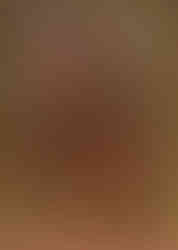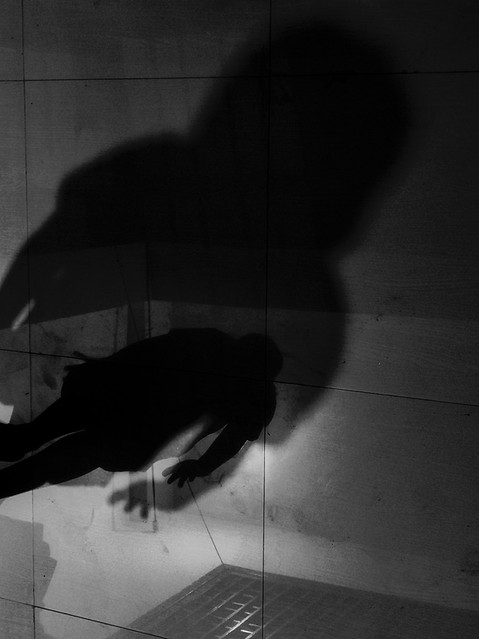
Born in 1986, Abhijit Pathak is an Indian artist based in New Delhi who is known for his abstract expressionist works. He has held several solo exhibitions, including at Gallery Beyond (2015); Lalit Kala Akademi, New Delhi (2017); Art Heritage, New Delhi (2019); and at the Indian Art Fair (2018) Gallery Art Explore, New Delhi. He has also participated in group shows in India and abroad, including at the International Art Fair, Busan, Korea. He participated in the 6th Beijing International Art Biennale and is a recipient of the 52nd National Award given by Lalit Kala Akademi, New Delhi. He also did a Residency at Can Serrat Residency, Barcelona, Spain. He is represented by Gallery Art Explore, New Delhi.

1. When did you decide and what prompted you to become an artist? Please give a brief account of your challenges and struggles in your journey as an artist. Any role models?
AP: I was influenced by art and music from very early on in my childhood. Those influences led me to pursue art. I was lucky to have spent my early years amidst the rice fields and gentle streams that were my playground, and it was there that my deep bond with nature was forged. My delight in drawing has early roots. From the age of seven my mother would have me adorn our home with religious symbols,which are usually applied with rice or flour paste. I was gradually drawn to painting, and eventually completed my Bachelor of Fine Arts from Varanasi. The city is known for its temple architecture, art, music, poetry and tehzeeb (grace). Varanasi played an important role in developing the impressions I carry today.
Music and the sounds of my surroundings have been a major influence in my creative process - perceiving, balancing the chaotic and the serene. The meaning is not noticed immediately but discovered and revealed over time. I faced numerous challenges, including coming from a rural background with minimal financial means. I appreciate the works of VS Gaitonde and Nasreen Mohammedi.
2. What art project(s) are you working on currently? What is your inspiration or motivation for this?
AP: I’ve been working on a series based on the Panchdhatu (gold, silver, brass, copper and iron). It has mythological significance and is described in the Vedas as the most important metals for human life. Panchdhatu was used in ancient Indian culture to bring back balance in life. Because of the deep involvement of the five metals in life, I’ve expressed and symbolized this traditional principle in my recent expressions.
Panchdhatu 1 and 2, Mixed media on canvas, 42 inches x 60 inches
3. Contemporary art has become very diverse and multidisciplinary in the last few decades. Do you welcome this trend? Is this trend part of your art practice?
AP: I don't know much about the trend, but for any artist, it is a natural progression to explore new possibilities. I have been expressing myself through paintings, video, multi-media installations, sound and photography.
State of Mind, Video
“As an artist, it is of prime importance for me to be at peace to express with clarity. The rhythm is an essential element in my process. Ideally, we all would like to be in a zen-like meditative state. The reality of life, as we have experienced, is drastically different. Full of turmoil, the emotional ebb and flow has been extreme. The long term economic, physical and psychological effects are going to be a big part of our struggles to find the right balance.
Through this time of upheaval, I have been expressing what I feel through my drawings and paintings. I have attempted to document my state of mind from being uneasy, full of turmoil and confusion at one extreme to a state of tranquillity, peace and bliss on the other. I have tried to replicate my emotions, feelings, visuals, dreams and sounds and present you with a glimpse of what I was feeling during this time. Harmony and chaos go hand in hand. One loses its identity if the other does not exist. Sharing and understanding each other is going to be humanity’s saving grace.”
Sensorium, Video and site-specific installation at Art Heritage gallery, New Delhi
Photographs from the site-specific installation Sensorium at Art Heritage gallery, New Delhi



Photography
4. Does art have a social purpose or is it more about self-expression?
AP: We are social beings. Most of our influences are owing to our interactions. Expression is derived from this, so the two cannot be separated. The purpose may or may not be social but making art is always about self-expression.

Milieu-1, Mixed media on canvas, 60 inches x 96 inches

Milieu-4, Mixed media on canvas, 60 inches x 96 inches

Milieu-6, Mixed media on canvas, 60 inches x 96 inches

Milieu-13, Mixed media on paper, 24 inches x 36 inches

Milieu-12, Mixed media on paper, 24 inches x 36 inches
5. Where do you create your art (workplace / studio)? What is your process?
AP: The actual process begins way before it ends up in the studio. I make a lot of notes in my journal, sketches, drawings, recordings, video and images before collating everything. Making sense of all the complexities is the challenging part. The process of creating work in the studio after that is much simpler.



Working process
6. To what extent will the world of art change in the post-Covid period – both in terms of what is created as also the business of art?
AP: I believe everything happens for a reason. I see the glass half full. Things will be in flux for some time. We will adapt to the new realities. I cannot tell you about the business side of things, but I’m sure there have been setbacks like with any other industry.
The Second Coming takes an in-depth look into the personal and professional lives of artists. The docuseries explores the psychological, social, financial and art-related impact of the pandemic.
Video courtesy of Art Dose
7. Tell us about any other interest you may have besides your art practice. Does it get reflected
in your art?
AP: My art is based on influences from my surroundings. I like to travel, try different cuisines, and I’m passionate about Indian classical music.

Musical Notation, Mixed media on tarpaulin, 144 inches x 144 inches

A Different Summer-1, (Drawing) Mixed media on paper, 22 inches x 30 inches

A Different Summer-2, (Drawing) Mixed media on paper, (Triptych) 36 inches x 18 inches

A Different Summer-3, (Drawing) Mixed media on paper, (Triptych) 36 inches x 18 inches

A Different Summer-4, (Drawing) Mixed media on paper, 22 inches x 30 inches

A Different Summer-5, (Drawing) Mixed media on paper, 22 inches x 30 inches

A Different Summer-6, (Drawing) Mixed media on paper, 22 inches x 30 inches
(All images and videos are courtesy of the artist, Abhijit Pathak.)
The artamour questionnaire is a regular series of interviews with visual artists across disciplines, who share their views about art, their practice and their worldview on a common questionnaire template. Like, comment, share and subscribe to stay updated.




















